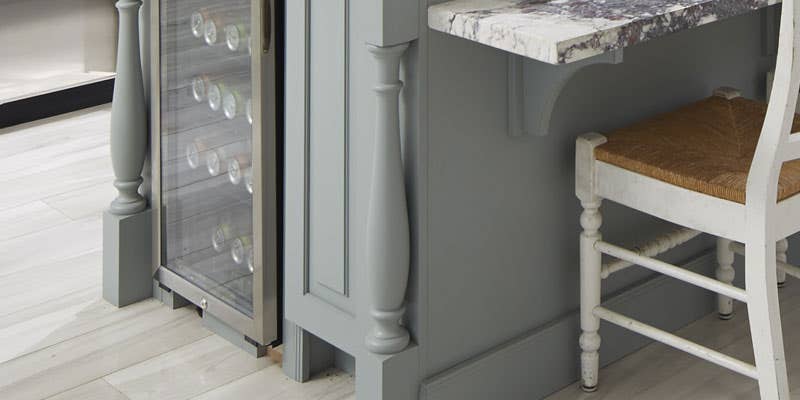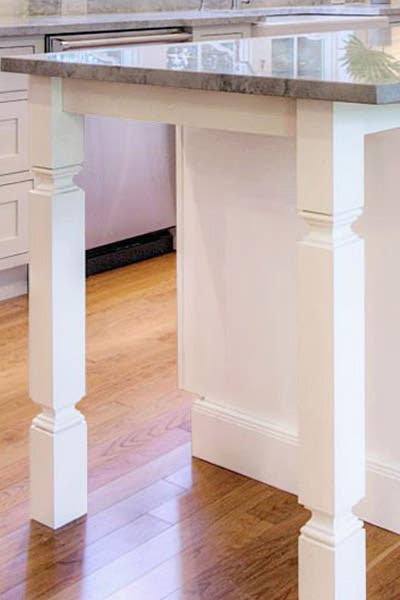Include Stability and Appeal with Sturdy Legs For Kitchen Island Setups
A Guide to Choosing the Perfect Legs For Kitchen Area Island for Your Home
Selecting the excellent legs for your kitchen area island is a nuanced decision that affects both the performance and visual charm of this main area. As you consider these components, it ends up being obvious that the appropriate legs can transform not only the look of your kitchen area yet likewise its usability for years to come.

Understanding Kitchen Area Island Legs
When selecting legs for a cooking area island, it's vital to understand their functional and visual functions in the general layout. The legs act as a vital assistance system, making sure stability and durability for the island, which commonly works as a work area, eating location, or collecting place. The choice of product and building method should be robust sufficient to stand up to daily use and possible wear.
Along with their architectural responsibilities, legs contribute substantially to the island's aesthetic allure. They can enhance the cooking area's design, whether with standard, modern, or eclectic styles. The elevation and proportion of the legs are additionally vital factors to consider; they must balance with the island's counter top elevation while guaranteeing comfy seating for those using the area.
Furthermore, the leg style can influence the total flow of the kitchen. Open, airy leg styles can produce a sense of agility, while strong, substantial legs might convey a more based and secure aesthetic - Legs For Kitchen Island. Recognizing these useful and aesthetic elements will certainly guide homeowners in making informed choices that complement their kitchen area's design and improve its functionality
Popular Styles and Products
The option of legs for a kitchen area island incorporates a variety of popular designs and products, each offering distinct features that can boost both functionality and looks. Conventional legs typically show luxuriant details and craftsmanship, boosting traditional kitchen layouts.

Elevation and Security Considerations

Stability is another crucial consideration. The legs of the kitchen area island need to give adequate assistance, guaranteeing that the structure can hold up against everyday use without changing or tottering. Material option plays a considerable function in stability; metal legs, as an example, tend to use higher stamina compared to read the article wood. In addition, making certain that the island is firmly secured to the flooring or wall surface can boost stability, especially for bigger islands that may bear substantial weight.
Matching Your Kitchen Visual
Picking the ideal legs for your kitchen area island goes beyond performance; it likewise plays a significant function in the total visual of the room (Legs For Kitchen Island). When choosing legs, think about the layout style of your cooking area.
Legs that complement or comparison with your island's surface area and bordering cabinets can create aesthetic harmony or striking focal factors. Furthermore, consider the coating of the legs; matte, shiny, or textured coatings can significantly impact the overall feel of the kitchen area.
Installment and Maintenance Tips
Installing kitchen island legs calls for careful interest to information to guarantee both security and visual charm. Begin by choosing a suitable location for your island, ensuring it is level and has adequate space for motion. Utilize a stud finder to situate wall studs if you are connecting the legs to a wall or utilizing braces for added assistance. Mark the positioning of the legs precisely prior to drilling.
When safeguarding the legs, use top notch screws and, if required, timber glue for additional strength. For steel legs, make certain that you are using proper anchors and devices to stop damages to your floor covering. It is recommended to look for levelness after setup, making adjustments as needed to avoid tottering.
Tidy the legs with a suitable cleaner, staying clear of unpleasant materials that might damage the surface area. By complying with these installment and maintenance suggestions, you can make certain that your kitchen island legs continue to be both practical and aesthetically appealing.
Verdict
In conclusion, selecting the ideal legs for a kitchen island demands cautious consideration of elevation, security, he said and visual compatibility. reference Eventually, thoughtful leg selection plays an important function in boosting both the practicality and design of the kitchen area space.
When picking legs for a kitchen island, it's necessary to comprehend their aesthetic and practical functions in the general design. Open, ventilated leg designs can create a sense of lightness, while solid, considerable legs may share an extra grounded and secure visual. The legs of the cooking area island need to supply adequate support, guaranteeing that the framework can withstand day-to-day use without moving or wobbling.Mounting kitchen island legs needs mindful attention to detail to guarantee both stability and aesthetic allure.In conclusion, selecting the suitable legs for a kitchen area island necessitates careful consideration of height, stability, and aesthetic compatibility.